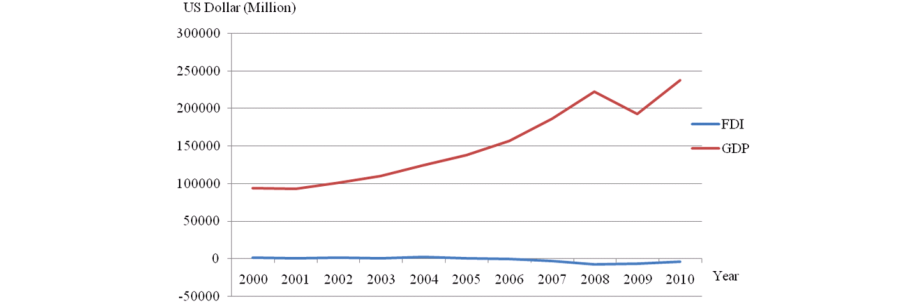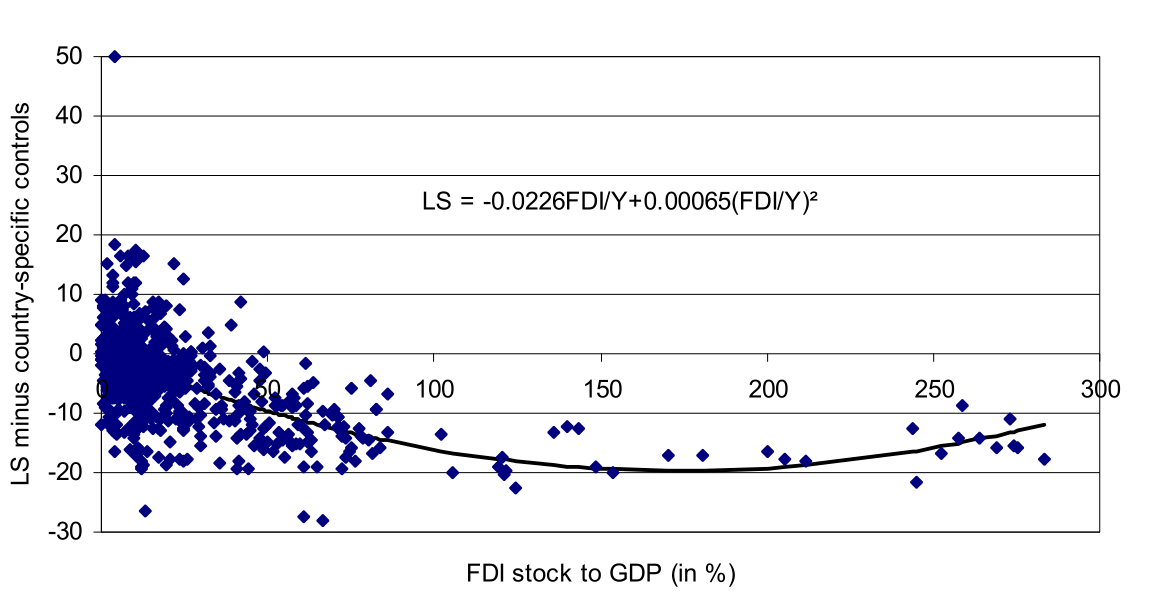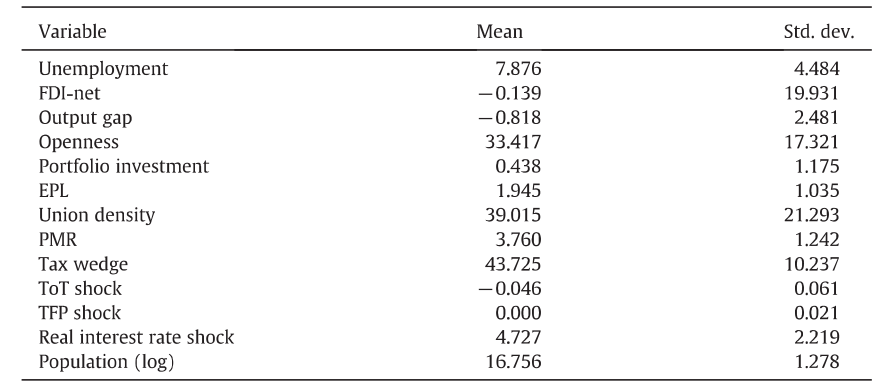Executive Summary
Despite its controversial nature, globalization has been shown to have a net positive effect on the economic situation worldwide. The following project is an attempt to introduce a controlled process that would leverage its positive influence to improve the employment rate in our local community. By involving the interested stakeholders in the analysis of the contemporary job market and development of feasible strategies acknowledging the DFI factor, the project is expected to create a robust environment resistant to the potential adverse effects of globalization and ultimately attractive for the employees. The project relies mostly on voluntary student participation and is expected to have positive long-term effects in both the economic and social spheres.
Background
One of the persistent problems of our local community is the relatively low employment rate. Despite recent improvement widely reported in the local press, the overall rate is still unsatisfactory when compared to state and national averages. Understandably, this situation directly impacts the state of the financial well-being of our citizens. However, the indirect consequences of low employment are far more encompassing and detrimental to the development of our locality.
First, the issue has a visibly negative impact on our younger population. First, it is traditionally more difficult to find a job for less-experienced workers, which restricts them from developing their potential. Young employees are a vital part of the workforce since they usually represent the most dynamic and progressive segment of the population. Limiting their opportunities for employment not only deprives them of the possibility of sustaining themselves financially but also promotes stagnation of local businesses (Tanveer et al. 91). Another undesirable outcome is the relocation of a valuable workforce—workers who fail at finding a job locally will eventually end up in other locations with more attractive job offerings. While it may be acceptable from a broader viewpoint, for our community it means a futile investment in education and development of the workforce.
Such a setting eventually creates a situation where students lose interest in education since it does not guarantee their employment in the future. In turn, educational establishments can become disconnected from the expectations of local employers. This will effectively create a vicious circle where each year the employment gap will grow, having a greater effect on community well-being each year. Finally, a high unemployment rate is associated with poor mental health in the community, where perceived poor chances of employment lead to depression among the population (Karanikolos et al. 1328).
As can be seen, the issue of unemployment is not to be taken lightly, as it is expected to have a progressively greater negative impact on many aspects of communal well-being unless properly addressed.
Project Description
The proposed project aims at improving the employment rate in the local community by leveraging the opportunities presented by foreign direct investment (FDI). Since the effect of FDI is still debated and manifests in different ways based on the conditions of the local market, one of the project’s goals is to decrease unpredictability and introduce as much robustness as possible. Therefore, the project can be broken down into three phases.
- Collection of data on the effect of FDI on the local economic setting and the weaknesses of the domestic labor force;
- Analysis of the data to determine patterns;
- Development of a strategy that would address the shortcomings and utilize the positive effects of FDI, if any.
By involving the motivated younger population segment, we intend to develop and initiate a sustainable business strategy based on the study of the local job market conditions which will allow local businesses to control both the employment rate and the quality of the workforce.
Assessment
The first phase consists of two distinct components. Data on the strengths and weaknesses of the job market can be accumulated in the form of survey responses and interviews with local businesses and vendors of international companies present in our local area. Currently, our community has four representatives of international companies that are fully operational and offer employment. The total number of businesses in the area is estimated at 114, with 11 being the result of foreign investment. Given this number and the planned duration of data collection of ten to fourteen days, the necessary minimum of the personnel required for it is 50 persons. Prior to the beginning of the campaign, twelve individuals already volunteered to participate in the data collection, and it is estimated that as a result of the promotional effort at least fifty more will be eager to participate once the project commences.
The data is collected and processed relatively easily. Therefore, this part can be performed without the help of volunteers hired by the members of our committee. Since the younger audience is the segment of the population most interested in the success of the project, high school and college students are the perfect candidates for conducting the surveys.
A dedicated committee is to be formed to coordinate the effort. Its tasks will include monitoring the project’s progress, updating participants on achievements, and ensuring the appropriate coverage in the media. To facilitate the commitment of the younger audience, social media outlets such as Twitter and Facebook are the most suitable candidates. The official Facebook page of the project, maintained by the committee, would contain information on the relevance of the project, its benefits, and achieved milestones. In addition, this move will allow for easier hiring practices once the need arises to assemble a team responsible for data collection and analysis. However, it should be clarified that given the current number of volunteers and the time left for the beginning of the project it is almost a certainty that by June more students will volunteer than is required for the project, so this can be viewed as a precautionary measure.
The collection of data on FDI’s impact on unemployment is a more complex issue. The project is to utilize a comprehensive set of calculations aimed at estimating the net effect of the FDI on the businesses known as the Schmerer’s linear model of net FDI effect (Schmerer 44). This model will account for the economic impact of the appearance of external businesses in the area, the growing rate of the external workforce, and the employees who are not official residents, and the income from local businesses which expanded to other areas. For these reasons, the data involved is both extensive and multi-layered. Therefore, it will require the services of a market research agency. Such a step would ensure maximum efficiency, eliminate unforeseen delays, and guarantee accurate results.
Analysis and Development
Data analysis will be handled in the same manner. The results of the surveys, which are less numerous and more easily coded, can be analyzed by the students who collected the data. The results regarding FDI effects, which involve complex calculations, are to be handled by the agency that collected them. The results will then be converted to a comprehensible form that can be understood by non-specialists and the general public and accompanied by recommendations for improvements in local business practices, e.g., the increased availability of jobs created by the opening of an international company’s subsidiary in the district, the net improvement in the efficiency of local businesses resulting from more homogenous hiring policies, or the benefits of investing in additional training for employees. These descriptions are the main tool of persuading local businesses to actively collaborate in the project. The participation offers them the possibility to adjust the existing employee base, gain access to workers who are better prepared for the specific conditions of the workplace, and improve employee satisfaction rate which is known to have a direct impact on the productivity of the organization and decreased cost of the hiring process.
Since the success of the project depends on the appropriately developed methods, this phase includes verification of the resulting product by a hired specialist.
Collaboration
Finally, the most responsible part of the project is persuading local employers of the necessity of introducing changes in their practices. This part is founded entirely on the commitment and enthusiasm of the participating youth, which, by this phase, is expected to be strong enough to form a dedicated core.
A series of workshops will be developed based on the results of the data analysis to illustrate the benefits of the FDI and suggest alterations in business policies that would allow increasing these benefits. In addition to the oral presentation, handouts and interactive visual aids will be required to maximize understanding and increase the chances of adoption by employers. The information included is expected to target three specific areas: challenging common myths about the negative effects of FDI (e.g., the introduction of the external labor force does not reduce opportunities for domestic specialists to find a job but instead creates a more uniform distribution of positions, increasing the productivity of the organization), examples of positive influence of globalization backed by relevant findings (e.g., the opening of the new restaurant of a famous international franchise, which led to the closure of two local businesses, eventually resulted in the creation of several dozens of new jobs—four times the amount of those initially lost), and suggestions for improvements (e.g., the creation of a collaborative practicum project between your company and a high school will allow the students to test their skills and identify weaknesses in their qualifications while you will be able to form preliminary ties, thus securing the influx of qualified forces in the future).
The sessions will occur at the meeting room provided by the University. Since this is a non-profit project aimed at improving the well-being of the community, the room, and necessary equipment will be provided free of charge. In the case when such an option will be unavailable, the budget covers the rent of commercially available alternatives.
Importantly, the events must detail the predicted time required for the changes to take effect. Otherwise, misunderstandings may result in some organizations opting out of participation early in the course of events before the effect becomes visible.
If delivered correctly, the described information will be incorporated into the business strategies of the participating organizations and eventually lead to improvements in employment.
Rationale
The project visibly leans toward acknowledgment and utilization of the effects of FDI, as well as globalization in general. For instance, rather than focusing on local improvements and supporting both the organizations and individuals bound to the community, the project entails the benefits of international business entities’ presence. While counterintuitive on the surface, this approach creates a more uniform and holistic take on the matter. An overemphasis on domestic forces would unbalance the job market by making it more vulnerable to the possibility of rising FDI rates (Decreuse and Maarek 292). Since there is no reason to expect that the pace of globalization will slow down, it would be logical to seek ways of dealing with it rather than attempting to avoid it and rely on traditional strategies.In other words, the inclusion of FDI factors in the project’s planning provides it with necessary means of protection from globalization’s adverse effects and tools for using its benefits to our advantage. The fact that it is data-heavy is also a safeguard from unpredictable situations and ensures that decisions are not driven by blind guesses. Finally, the project incorporates students as the main participants, with the exception of highly specialized data management. This decision is based on two assumptions. First, a young audience is among those most heavily influenced by employment issues, which is expected to facilitate commitment and passion. Second, this initiative will serve as a valuable experience and foster stronger social involvement in the life of the community. Finally, it will minimize the reliance on external parties and significantly decrease the cost of the project.
Expected Outcomes
The successful implementation of the project is expected to bring about several improvements that would be observable by the end of the year. Specifically, some of the local businesses that are less resistant to change will introduce at least one policy that would result in better opportunities for members of the younger population and immigrants to find a job. If followed consistently, the altered practices will result in increased productivity for the businesses and, by extension, improvements in brand image. For employees, this will mean an increase in perceived accessibility of employment, known to result in stronger motivation and resistance to depression (Karanikolos et al. 1328). Since the project is built on student participation, it can be expected that its reputation will spread via word of mouth and will be backed by a presence in social networks, further improving recognition and trust. Most importantly, the project is expected to lay the foundations for further long-term improvements. First, the initial data obtained from the research will allow annual benchmarking, which would be helpful in convincing the authorities of the relevance of the direction taken. With their support, the project could be taken to a new level in subsequent years, either directly or by adopting the strategies used in other initiatives. Finally, the collaboration of students with local employers will provide them with the necessary social skills and strengthen social ties, which will likely have an indirect impact on the integrity of the local community.
Budget Narrative
The most significant part of the expenses associated with the project is a payment to the research agency. The average price of its services for the required scale and scope is $27,000. Next, the presentations and workshops of the third phase would require both space and equipment such as a presentation stand, smart board, and computer projector, as well as microphones and speakers in the case of a large audience sample. Since the project deals with a limited number of employers and does not require frequent meetings, the preferred solution is to rent a meeting room, available for non-profit initiatives free of charge. However, to exclude the possibility of unforeseen constraints, the cost of commercially available conference rooms is included in the budget, capped at $150 per event. Next, the printed materials such as handouts and maps of developed interventions will require a certain amount of funding. The surveys and interviews are expected to be conducted by the students on a voluntary basis. The setup and maintenance of the Facebook and Twitter accounts will also be performed by the voluntary participants and safeguarded with a $850 in a budget.
Schedule
The project is expected to start in June when students have the most opportunity for involvement. The committee needs to be formed within two to three days, and the search for the appropriate agency is expected to be completed within one week. The design of surveys and interviews will likely be over by this time, which would allow starting both segments of research by the second week. The collection of data can be finished within ten to fourteen days, and the analysis and design are expected to take up to a month in total. Therefore, by the end of July, the team will have at their disposal the set of solutions and strategies. Converting these to accessible form, along with designing and printing the handouts will require four days. Therefore, workshops can be started in August. Depending on their initial success and the number of participants, six to nine events may be necessary. Since they will be performed in pairs with a two-day interval, the third phase will be completed by mid-August, where limited supervision can commence, consisting of inquiries conducted on a monthly basis. The initial short-term evaluation will be performed monthly and finalized by the end of May next year.
Concluding Statement
A growing body of evidence has been shown to associate unemployment with a negative impact on the well-being of the population and, by extension, adversely affect such important metrics as the mental health of individuals and the successful realization of youth potential. The fact that FDI is positively associated with net improvements in employment rates simply cannot be ignored—both because of its evident benefits and due to the pressing need to adapt to the rapidly changing conditions of the modern world (Shaari et al. 4900). The proposed project is expected to effectively target the issue due to the readiness for change of the main stakeholders. More importantly, its largely voluntary nature excludes unnecessary expenses while its self-supporting nature in the latter stages creates a sustainable format that would be easier to maintain.
Attachments



Works Cited
Decreuse, Bruno, and Paul Maarek. “FDI and the Labor Share in Developing Countries: A Theory and Some Evidence.” Annals of Economics and Statistics 119-120 (2015): 289-319.
Karanikolos, Marina, et al. “Financial Crisis, Austerity, and Health in Europe.” The Lancet 381.9874 (2013): 1323-1331.
Schmerer, Hans-Jorg. “Foreign Direct Investment and Search Unemployment: Theory and Evidence.” International Review of Economics & Finance 30 (2014): 41-56.
Shaari, Mohd Shahidan, et al. “The Impact of Foreign Direct Investment on the Unemployment Rate and Economic Growth in Malaysia.” Journal of Applied Sciences Research 8.9 (2012): 4900-4906.
Tanveer Choudhry, et al. “Youth Unemployment Rate and Impact of Financial Crises.” International Journal of Manpower 33.1 (2012): 76-95.